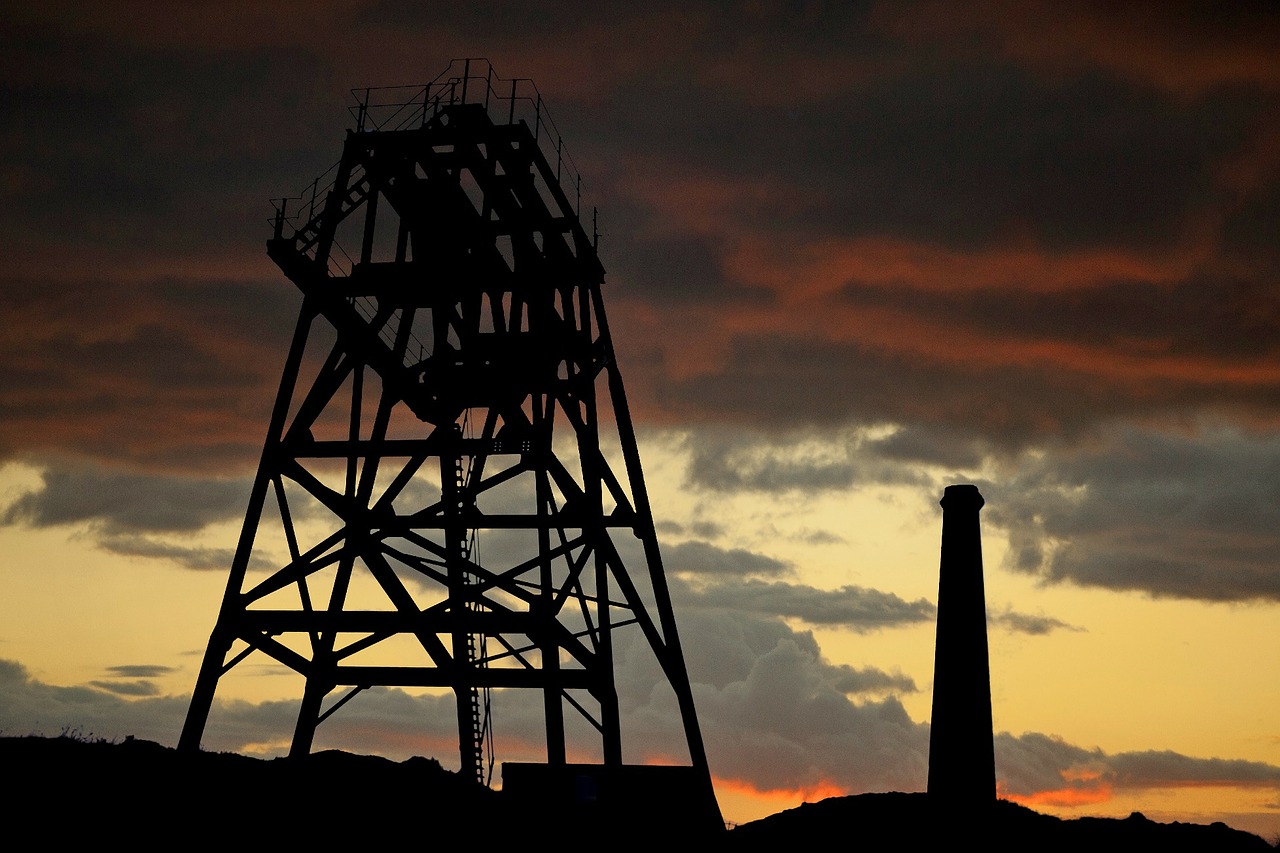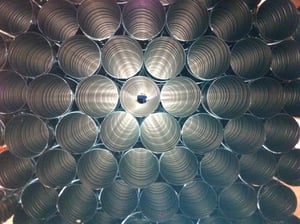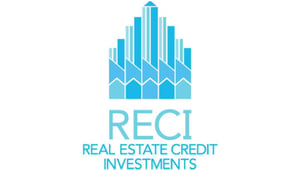Diversified Energy Company plc (LON:DEC) Chief Executive Officer Rusty Hutson and Chief Financial Officer Brad Gray caught up with DirectorsTalk for an exclusive interview to discuss the strong performance, acquisition of Oaktree Capital, Focus Five framework, dividends, sustainability, NYSE listing, and priorities for 2024.
Q1: Despite a weak gas price in 2023, Diversified Energy Company has managed to deliver a strong set of results. What’s behind the performance?
A1: I’ll let Brad chime in a little bit here, but I really give credit to our ground game.
Our employees that work in the field every day, we’ve always tried to insulate them jobs from any kind of pricing risk and really what the price of the commodities are. We tell them, you guys do your job on the ground, get the production, do it in a way that is efficient and we will deal with the pricing and we’ll hedge and we’ll make sure that we’re getting the margins out of the production as necessary to be successful.
And we have one of the best ground games in the industry by far. We’re an operator, we don’t drill and complete wells, our employees are out there day to day, well to well, driving value at the wellhead, and I think that’s really been the success of what we’ve been able to do in ‘23.
Rusty, I appreciate you saying that because with my past 6.5 years being Chief Operating Officer, I agree. I think we’ve got a tremendous field team and ground game and our employees really work hard to deliver on the business model that we’ve set up.
I would say our 2023 results are really an excellent testament for the soundness of our business model. We saw durable production declines around 10% so our production continues to be within our projections and to be very consistent, we have a very effective and thoughtful hedge program and when you look at the commodity price change from ‘22 to ‘23, which was dramatic, our revenue, total revenue and commodity revenue, for ‘23 was higher than ‘22. So, the hedge program was very effective.
We continue to look for cost efficiencies in our business, whether that’s elimination of unnecessary spending or in vertical integration opportunities and we vertically integrated in three different areas of our business in a significant way. Number one is with midstream assets, number two is with our marketing organisation, where we market 100% of our gas as well as the majority of our crude and then the third here is over the last 18 months with the integration of our next level energy retirement company. That’s another area that we’ve been able to drive additional margins and good cash flow by plugging wells for third parties, generating margins to pay for the cost of plugging our own assets.
So all of those aspects really speak to the soundness of our business model.
When you go back and look at the past 6 years of our results, we’ve had 50% plus cash margins in our business during numerous commodity cycles.
Q2: Now, you announced an acquisition this morning. Can you speak a little bit about the acquisition of the working interest from Oaktree Capital Management? What are the key benefits?
A2: It’s one of those things where I’ve been previewing for quite a while with our investors, is that when we entered into this agreement with Oaktree to acquire assets over a 3-year period where they would co-invest with us, the benefit of that was that we were able to enter this new central region, East Texas, Louisiana and Oklahoma, but to enter it in a way where we were able to scale it up at a much quicker rate than if we were just trying to do it alone.
So, we were able to buy a billion dollars’ worth essentially of assets over that period of time in which they participated at 50% but I knew at some point that was also an inventory of assets that we could acquire back from them once the return thresholds that they had were hit.
So for us, the benefits are significant. We’re able to acquire a working interest that we already operate, where we already have all the operating costs associated with it, we have all the backroom operations and G&A costs embedded already in our numbers.
We’re able to acquire this asset at a very compelling valuation and not incur one dollar of additional expense, which is significant, and so it’s low risk. We flip a switch and move the interest from Oaktree to us and it adds significant scale both from a production perspective, a revenue perspective, and a net cash flow perspective.
So it was the lowest risk, easiest acquisition for us to do and to add the most value to us on a going forward basis. I said this earlier on our earnings call, that asset alone will cover our decline rates in ‘25, which is significant.
Q3: You launched a strategic framework today called Focus Five, could you just give us an overview of what that looks like and how it will benefit shareholders?
A3: Our shareholder thresholds and how we return capital to our shareholders over the last 6/7 years has been primarily focused on dividends and we’ve increased that dividend pretty substantially over the 7-year period. We’ve paid out over $700,000,000, which $400,000,000 has been in the last three years, that’s a significant return to shareholders and I’m a large shareholder so it was significant to me as well.
As we look to the future of the company, and we looked at the last 12-18 months of trading on our stock and we saw that there, in essence, was a what I would call a kind of a buyer strike in terms of the markets being pretty, pretty difficult over the last 12 to 18 months, especially with the income funds. We knew that for us to be successful long term, that we were going to have to take those shareholder returns and really generate over a four pillar system versus just dividends.
We needed to be able to pay down debt and to deliver the business over a period of time at a faster pace than just existing under the existing thresholds. We needed to be able to continue to pay, not only pay a fixed dividend, but for it to be sustainable over the long haul and we made a statement this morning that we feel that the current dividend that we set this morning is sustainable for the next, at least next 3 years. The only reason I stopped the 3 years was that’s about all we forecast at a time, we don’t really try to go past that.
So, for the next 3 years, it’s sustainable so investors can be confident that that dividend will be paid for the next 3 years.
We also wanted the flexibility to repurchase shares going into the US markets, that’s going to become more and more important to us, that’s what the US institutional investors want to see is the ability to repurchase shares when the share price intrinsic value is not what it should be.
Lastly, which is the most important for the future of the business, we’ve got to grow the business. We’ve got to be able to have cash flow that’s being generated that we can reinvest and grow the business long term, long term investment or long term growth, flexibility to repurchase shares when the intrinsic value is not there, a meaningful and sustainable dividend and meaningful debt reduction.
So, now instead of a dividend only, we’re spreading that over four pillars and that Focus Five and a renewed emphasis on free cash flow generation is going to help us to maintain that overall.
I would just add to Rusty’s comments that this focus five is very much aligned with when we first started the business and we listed it back in 2017. It’s focused on growth, cost optimisation, solid production and paying out a return but with our Focus Five and the four pillars that Rusty mentioned, this is a renewed focus on that but I would say it’s more of a balanced focus as well.
I think over the last several years, we’ve probably been not as balanced as we maybe could have been with a tremendous amount of emphasis on paying a very high dividend and the benefits of our Focus Five and our four pillars of use of cash is that even with a dividend reallocation, we’re still at the top quartile of the FTSE 250. When you look at gas peers in the United States, we’re at the high end of our peer group from a dividend yield perspective as we trade here today.
So, this is not a move away from returning cash returns to shareholders, it’s a more balanced approach to ensure that we have a long term investment opportunity for the future.
Q4: I was just going to say, I think you’ve answered this already, but you’ve also revised your capital allocation policy, which sees a reduction in the fixed dividend for the next 3 years. What was the reason, what’s driven that decision?
A4: Well, that’s just what we just really talked about is that the reallocation of that cash.
So, it’s going to reduce our payouts by $110,000,000, we can then take that over 3 years, just over the 3-year period that we’re talking about, the new dividend being sustainable the next 3 years. That $110,000,000 a year represents $330,000,000 that could pay down debt, buy back stock or grow the business and that’s an important factor in that we saw that the fixed dividend that we were paying currently was going to preclude us from being more flexible in the way that we approach shareholder value and returning capital to them, whether it be through share repurchases, growing through accretive acquisitions or increasing net asset value through stringent debt reduction.
We were able to really just to take a step back and the Board was very thoughtful in the way that we looked at this in saying that we’ve got to be more thoughtful in the way that we reallocate our cash on a going forward basis, especially as we enter the US markets, which now represents a pretty substantial amount of our daily trading activity. The way that the US markets and the way that the UK markets look at things are going to be a little different and the US institutional investors are going to want to have more flexibility around cash. This is going to give us the ability to do that.
We also think that there’s a great opportunity for growth for a couple reasons. One is we’ve got a low commodity price at this point that historically has created opportunities for some dislocation in value and we’ve done well in those environments where we’ve been able to come in and buy assets at very reasonable prices. We need to be able to be flexible, have enough flexibility in our capital structure and our liquidity to be able to act on those opportunities so that’s a big item for us as well.
Q5: Now, you’ve made further strides on the sustainability front, which is seeing you being recognised through various awards and strong ratings yet the company is still continually being criticised by various groups. Does that frustrate you?
A5: Yes, well, frustration is definitely a way to describe it yet the reason it’s frustrating is because we are doing all these right things. We’re OGMP Gold with MSCI, we have probably an above average rating from an MSCI perspective, Double A rating compared to most E&P companies. We do more in the US than most US companies do from an emissions detection and reduction standard but honestly, we’re a different model.
The well counts are the biggest issue. I think that draws the most attention from some of these climate activists and such, and what we’re trying to do is answer their questions, give them the response to show that we’re doing all the right things. A lot of it was around asset retirement previously, and we just went out and took a liability and made it an asset, we went out and acquired and built a very large asset retirement company in Appalachia. We do a substantial amount of the amount of wells that are retired on an annual basis, not only for ourselves, but for third parties, including the states which have these orphan wells that they have to deal with and that they’ve been given federal money to take care of.
So, we’re doing all the right things. We’ll continue to communicate, it will never stop climate activists from having criticism, it’s just not going to happen, we’re in an industry that’s going to be under criticism for the foreseeable future. We know we’re doing the right things, we’ll always respond accordingly, we’ll keep our foot on the accelerator as it relates to ESG and emissions and detection and corrections and reduction, and we’ll continue to make progress on our methane intensity rates.
We’re proud of what we do. We’ll continue to be aggressive, we can’t stop people from criticising, all we can do is continue to prove them wrong, which we have.
Our business model is very much focused on stewardship of the assets that we acquire and that’s something that we work on every day. When we can make assets safer, more environmentally sound, more productive, and we can maintain jobs, we can pay taxes, we can pay royalties, and we can just improve the overall community impact of where we operate, we think that’s the right thing to do, we’re committed to it and we will continue to do that.
We really try to insulate our field employees from the frustrations that we might have when we have some of these interactions so when you know you’re doing the right thing, it makes it a lot easier.
Q6: You recently listed on the New York Stock Exchange, what do you hope to gain from the listing? Are you still committed to the London market?
A6: The New York Stock Exchange listing that we did in December was an important strategic move for us that our UK investors fully supported. Long term, even our UK investors know that the trading liquidity in the US, the amount of institutional investors in the US, the indexation in the US is all a big benefit to the UK shareholders. We are definitely not abandoning our UK shareholders, in fact, they’ll always have the ability to be invested and be part of what we’re doing.
The benefits of that, other than the ones that I just mentioned, is that we’ll have access to pools of capital that have been a challenge here in the UK over the last 12/18 months. Anybody who’s involved in the markets over here know that the interest rates being higher, the outflows of funds, especially from income funds, has been pretty challenging.
The ability to invest in companies has been challenged by a lot of these institutions, to some degree, the regulatory environment, there’s definitely regulatory changes that need to be made to make the London market over the long haul more competitive.
Getting into the US was an important step. We’re a US-based company, and so it just made sense for us to start accessing the pools of capital that were available here. We have been heavily surprised by the amount of trading activity that’s picked up without issuing any equity in the US. The daily trading in the US probably represents 40-50% of our total trading activity on a daily basis between the two markets, so it’s been pretty substantial.
I think another big benefit that we should see around mid-year is the ability to enter into indexation, specifically the Russell 2000, here in the US, which we are fully qualified to do. That will have a substantial impact on ETF trading and passive trading of our shares here in the US, which is very, very significant compared to the indexation that we currently sit in in the UK.
So those are all big benefits.
What I would say is they benefit the UK shareholder as much as they benefit the company. I’ll add that clearly the New York Stock Exchange is a much larger market than the London Stock Exchange, I think everybody understands that, but as Rusty said, there are tremendous benefits for the UK shareholder, and the way we structured the listing is as a dual listing.
The way the systems are wired between the London Stock Exchange, the New York Stock Exchange, and then a system that sits in the middle that’s called DTC, allows for a very efficient flow of trading liquidity across both markets. The structure is important, and it provides a lot of benefits to our UK shareholders.
Q7: Finally, what’s the priority for Diversified Energy Company in 2024? Where do you think you’ll be at the end of this year?
A7: So, in our earnings presentation, as we talked about the year, what I would say is that we’re heavily focused by the end of the year on reducing overall leverage and that’s part of the recalibration of the dividend. We fixed a meaningful but sustainable dividend for this year and into the future, that puts us at the high end of both our UK FTSE peers, but also really, we’re sitting above our US peers in terms of dividend yield.
We’ll continue to look for creative acquisitions, which now we have the flexibility to do, and look for ways to create heavy liquidity and capital access.
So those are two big main factors as we move throughout the year.
And as we end the year, I think that even if we just did that, that would be a substantial achievement for the company and should put us on a very strong peer foothold in terms of valuation and that the share should rerate in a meaningful way.
In one of the slides of our investor presentation, we talk about merger mania that’s occurring in the US and so there are some significant transactions that have occurred both in the oil space and the gas space. We believe that’s a great opportunity for us as we move into the second half of 2024 because these large transactions require Federal Trade Commission approval and, in many cases, we believe the FTC will require some type of divestiture of assets from these large mergers, and these will be nice assets.
With us being a consolidator of choice within the US market, and as we’ve positioned ourselves to be the right company at the right time, we want to be in a position with our liquidity and with our stock to be able to transact on some of these nice asset packages that we believe will come to the market and will be a great benefit to our shareholders going forward. Because they’ll be assets, they’ll be very much a cash flow producing asset and we’ll look to acquire those packages in areas where we’ve got scale and opportunity to generate additional synergies.








































